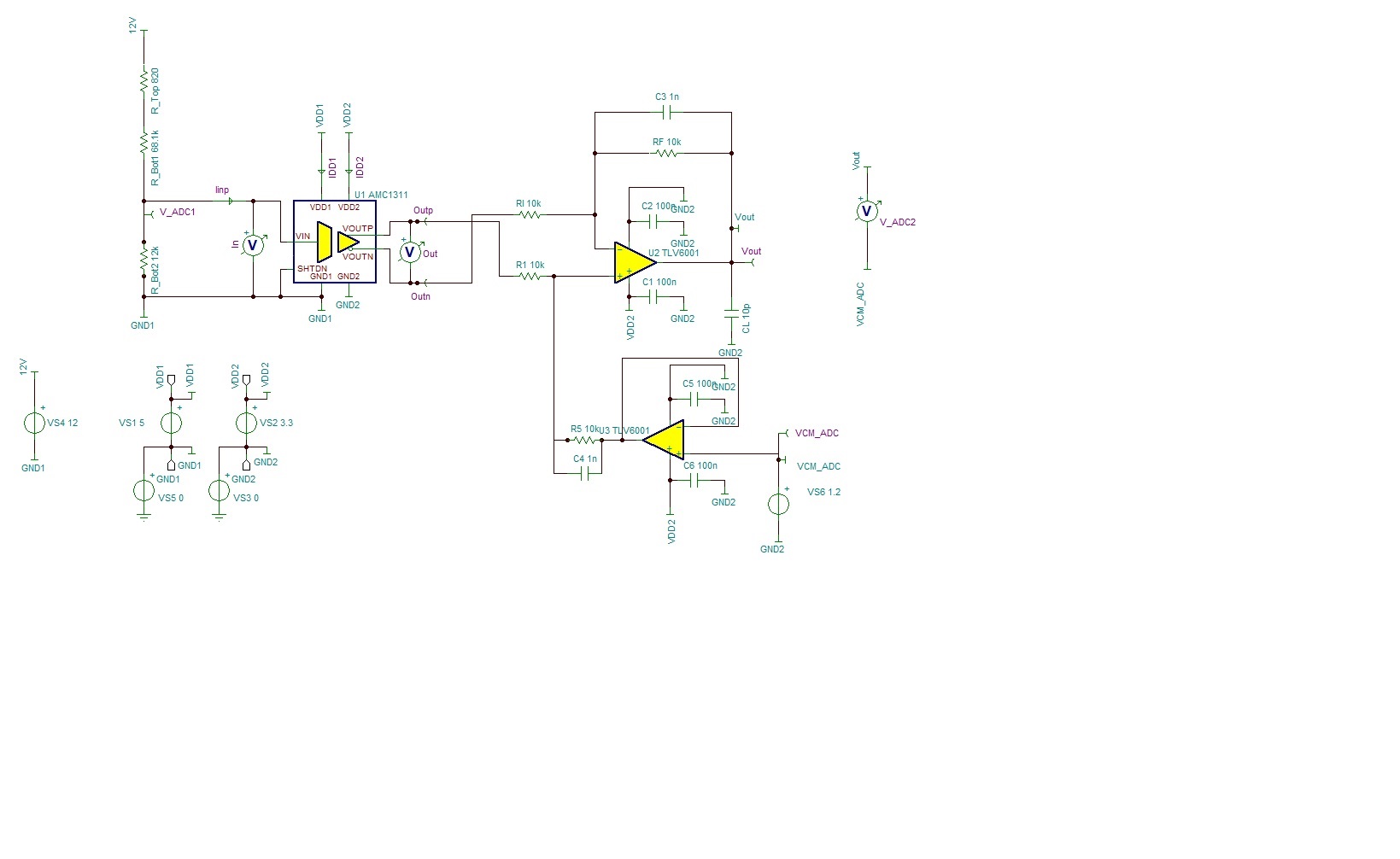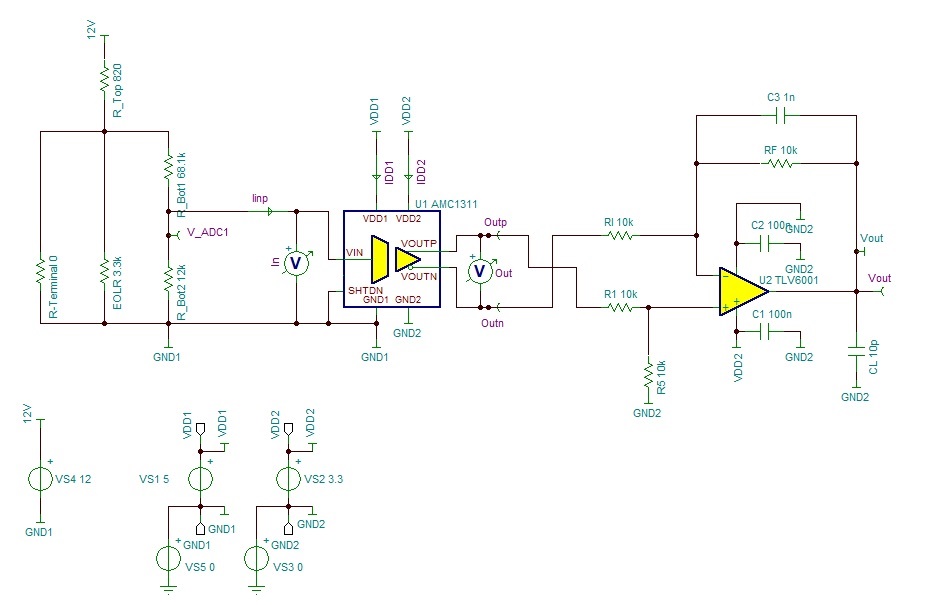Dear Team,
I did a simulation according to the circuit in AMC1311EVM, my question is what' the reasonable range of VCM_ADC in the circuit?
Pls correct me if I'm wrong, I found from VCM_ADC=1.44V, the Vout start to be clipping. So the VCM_ADC I selected should be <1.44V, right?
Does it be related to the value V_CMout mentioned in the datasheet?
Thanks a lot in advance!





